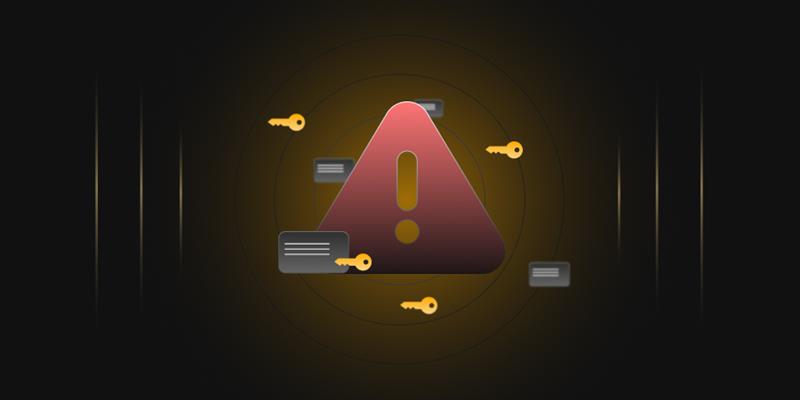Overview
Public Key Infrastructure (PKI) is based on the principles of asymmetric cryptography: messages are encoded using the recipient’s public key, and the recipient decodes the message using her private key. However, how do we know that the public key we are using indeed belongs to the intended recipient? What if the public key is a forgery and belongs to an impersonator? A digital certificate helps to establish whether a public key truly belongs to the purported owner.
Just like a physical certificate of identification such as a driver’s license or a passport, a digital certificate provides information about an individual along with her/his public key and helps anybody else verify the identity of that individual. The certificate also contains one or more digital signatures, which indicate that the information in the certificate has been attested by some other trustworthy person or entity, known as a certificate authority. We will cover more about certificate authorities in a subsequent article.
Types of digital certificates
The main types of digital certificates that are used today are:
- Server certificates: These implement the SSL/TLS (Secure Sockets Layer / Transport Layer Security) standards, are installed on the server, and are best known to have enabled the boom in e-commerce implementations by helping secure the communication channel between the client and server. SSL certificates in turn are of three types:
- Domain Validation (DV) certificates: These only verify that the certificate owner has the right to use the domain name; however, they don’t certify who the owner is. Since they involve only basic validation, they are cheap and can be obtained instantly from the certificate provider. DV certificates are typically used for basic web sites and web applications.
- Organization Validation (OV) certificates: These provide additional assurances about the certificate holder and include validations about the organization, domain ownership, and whether the applicant is authorized to apply for the certificate. OV certificates are a good option for e-commerce web sites.
- Extended Validation (EV) certificates: These offer the highest levels of encryption and follow a strict authentication process before the certificate is issued. EV certificates are typically used by banks and financial institutions, as well as e-commerce applications.
- Organization certificates: These are typically used by corporate entities and help to identify employees for secure web transactions and email communication.
- Client / Personal certificates: These are “digital IDs” that help to verify an individual’s identity and also help to control the access that individuals have to information and data. In general, certificate-based authentication is far superior to a traditional User ID and password-based authentication mechanism. Personal certificates can also be used for document signing purposes. These certificates are also helpful in Business to Business (B2B) scenarios – for example, allowing suppliers and partners to access and update specific information such as shipping dates or inventory availability.
- Code signing certificates: These provide the ability to digitally sign software before it is distributed, typically over the internet, for downloading. These certificates help the recipients downloading and installing software to verify that the code is from an authentic source and that it has not been altered e.g. by the insertion of malware before reaching the recipient.
The X.509 Standard
Most digital certificates today are based on the X.509 standard, defined by the International Telecommunications Union (ITU). X.509 specifies a certificate format with a standard set of fields as indicated below.
- Version number: Identifies which version of the X.509 standard the certificate is based on
- Public key: This is the public key of the certificate holder
- Serial number: This is a unique number to identify the certificate and distinguish it from other certificates issued by the same entity.
- Certificate holder’s unique identifier: This is also known as a Distinguished Name (DN) and is intended to uniquely identify the certificate holder across the internet. The DN consists of fields such as Common Name (CN), Email, Organizational Unit (OU), Organization (O), and Country (C).
- Validity period: This includes the date/time when the certificate was issued, and the expiration date/time.
- Issuer unique name: This is the unique name of the entity that issued the certificate, usually a Certificate Authority (CA). Using the certificate implies that you trust the CA that issued the certificate.
- Issuer digital signature: This is the digital signature of the CA, generated using the private key of the CA which can be verified through the CA’s public key.
- Signature algorithm: This identifies the algorithm used by the CA to sign the certificate. One example of a popular algorithm used for signing certificates is the Secure Hash Algorithm (SHA) with a hash length of 256, also known as SHA256.
Certificate Extensions
Version 3 of the X.509 standard introduced certificate extensions, which can be used to provide additional information about the subject, apart from that contained in the standard fields. Examples of such additional information include alternative subject names or information on what the certificate can be used for, such as signing a digital object. Extensions are qualified as critical and non-critical and this defines how the additional information is to be processed by the recipient.
Certificate Keys
As described earlier in this article, PKI is based on asymmetric cryptography, which uses a public-private key pair. It is important to note that this key pair is created by the requestor and not by the issuing authority such as a CA. Requestors apply for a certificate by sharing their public key with the CA. The CA includes this public key in the certificate that it issues to the requestor. Certificate holders assert their identity by proving that they possess the private key corresponding to the public key in the certificate.
Key protection and management
The most vulnerable aspect of PKI is the protection of private keys. If private keys are compromised, the entire system is compromised. Operating systems provide some basic features that can be used for key protection, an example being the Data Protection API (DPAPI) in Windows. For increased security however, one of the best practices is to use dedicated hardware appliances such as Hardware Security Modules (HSMs) and Trusted Platform Modules (TPMs).
Such dedicated hardware based key protection solutions are a good option for large organizations who manage a large number of keys. For smaller organizations however, HSMs and TPMs could be an expensive option and alternatives such as virtual appliances and cloud key management solutions could be more suitable.
Certificate stores
A certificate store is a repository used by the certificate holder to store digital certificates. This is usually a special location in the file system provided by the operating system. The Windows operating system for example, provides the following types of certificate stores:
- Local Machine Certificate Store: This is local to the computer and global for all the users. It is located in the system registry under HKEY_LOCAL_MACHINE, examples being HKEY_LOCAL_MACHINESOFTWAREMicrosoftSystemCertificates and HKEY_LOCAL_MACHINESOFTWAREMicrosoftEnterpriseCertificates
- Current User Certificate Store: This is local to a user account on the computer and located in the system registry under HKEY_CURRENT_USER, an example being HKEY_CURRENT_USERSoftwareMicrosoftSystemCertificates
- Trusted Root CA Certificate Store: This contains the root certificates of all the CAs that are trusted by the Windows operating system. Administrators can modify the default set of trusted CAs and also manually install the root certificate of their own private CA.
- Trusted Publishers Certificate Store: This contains information about code signing certificates of trusted publishers that are installed on a computer. Administrators can modify the default set of trusted publishers and manually install code signing certificates into the trusted publishers certificate store.




